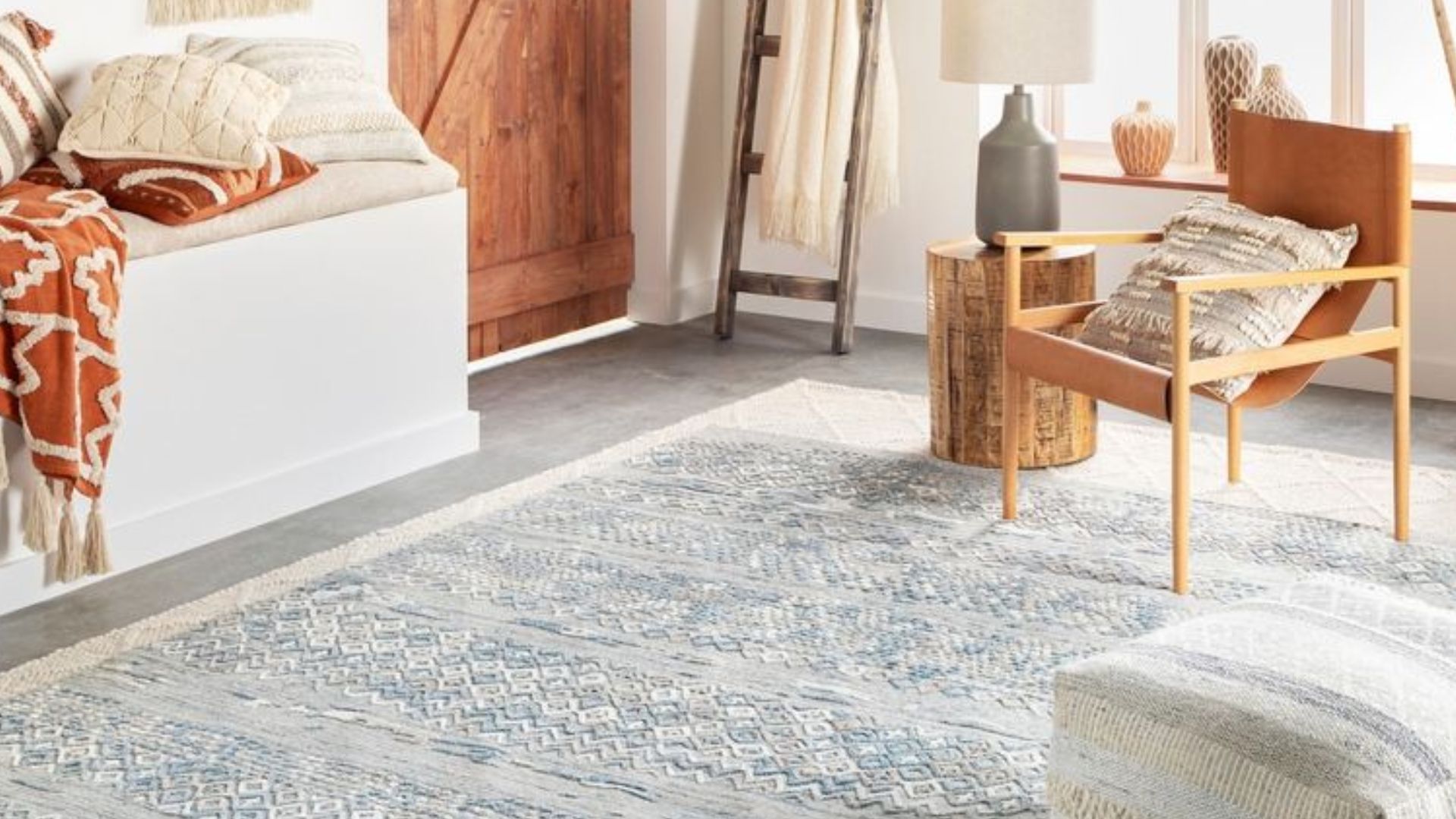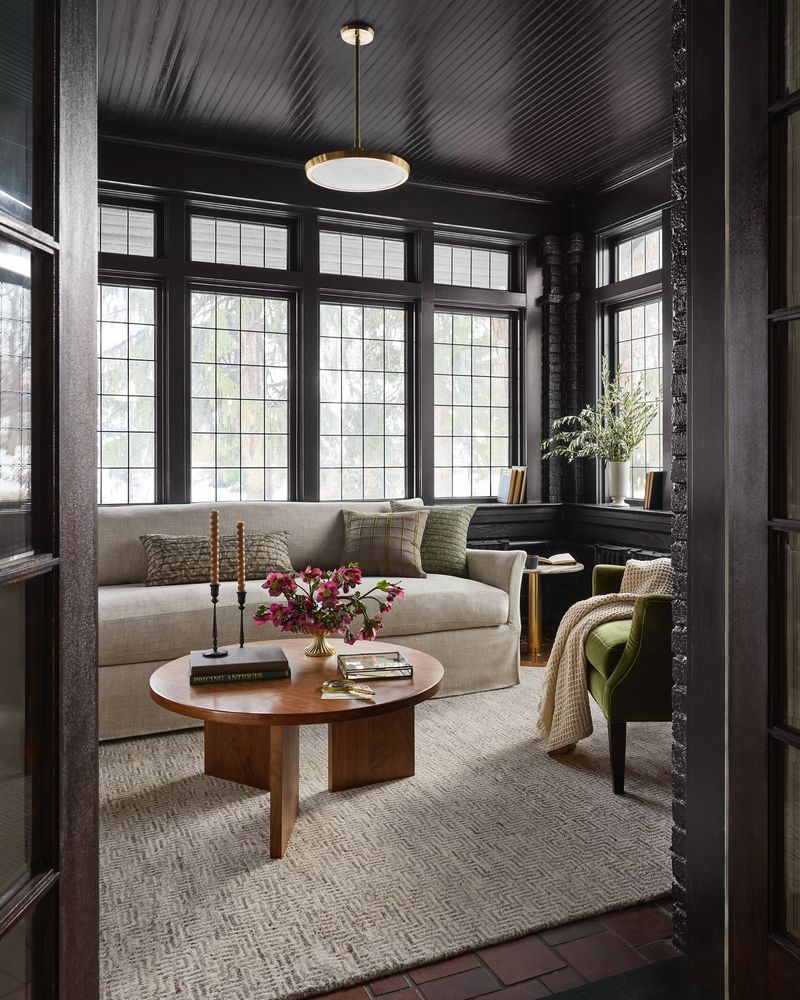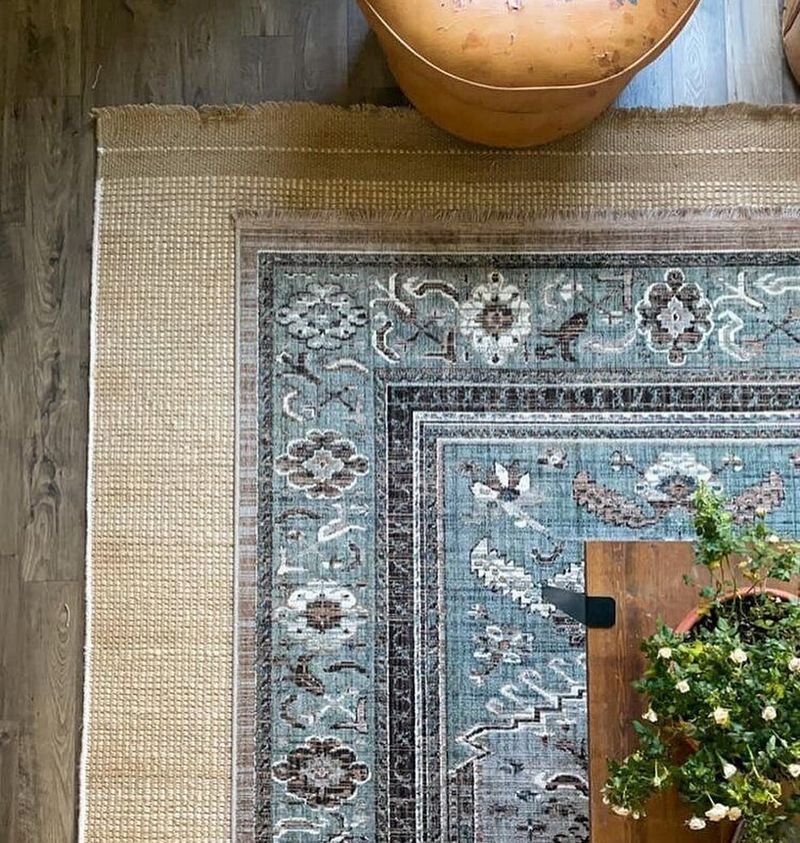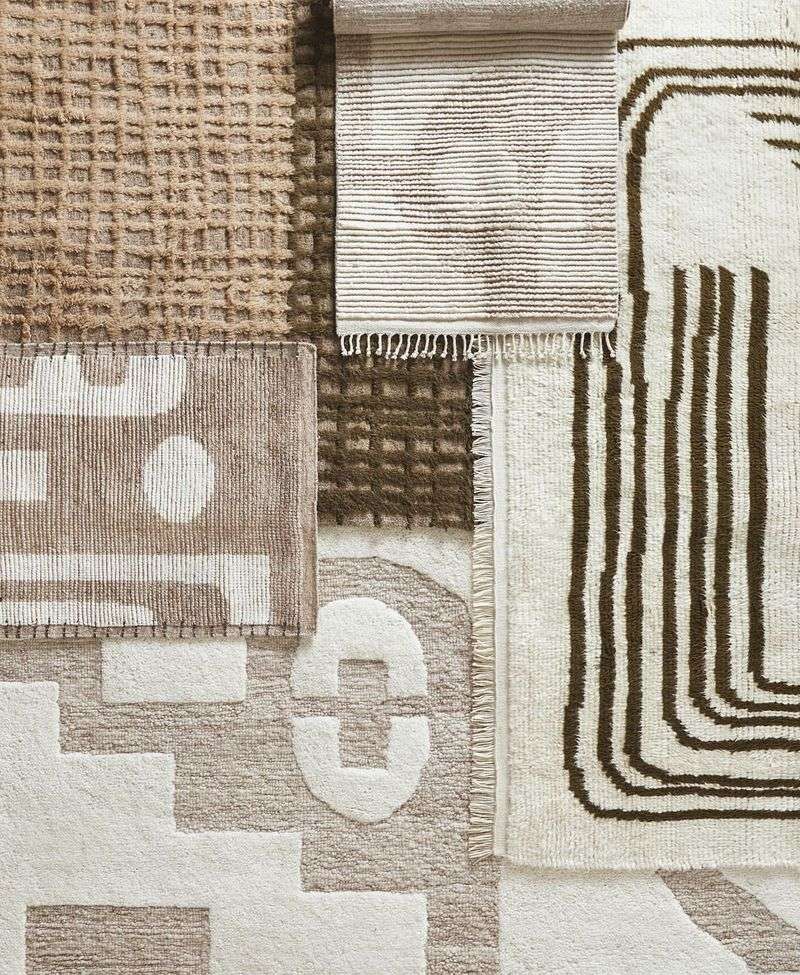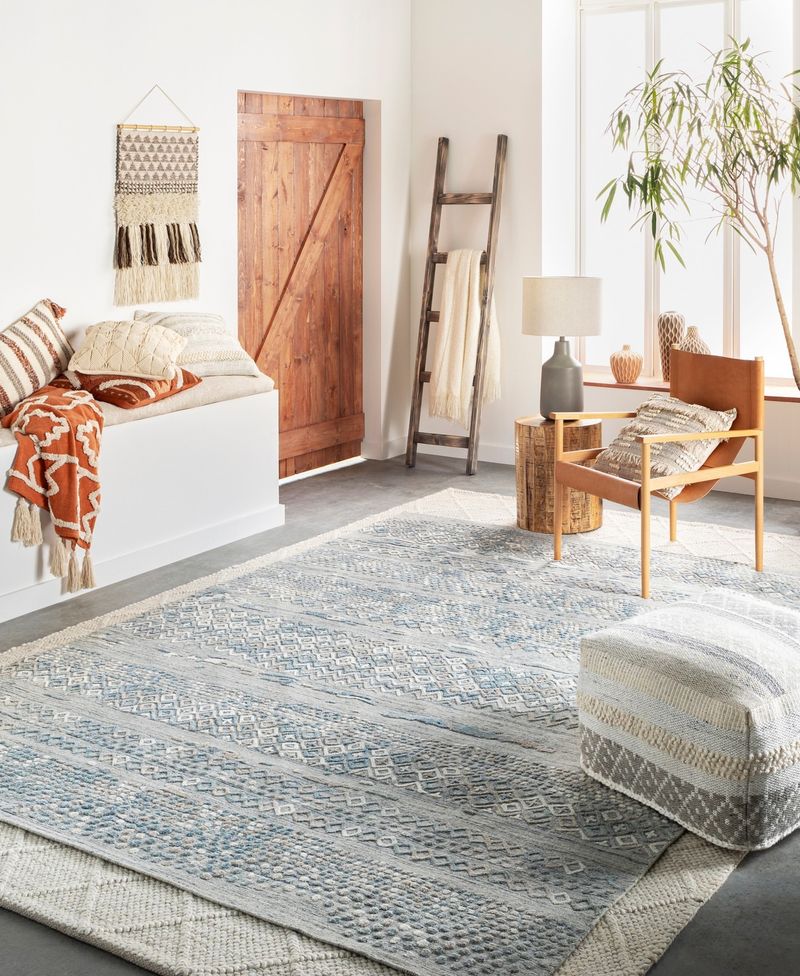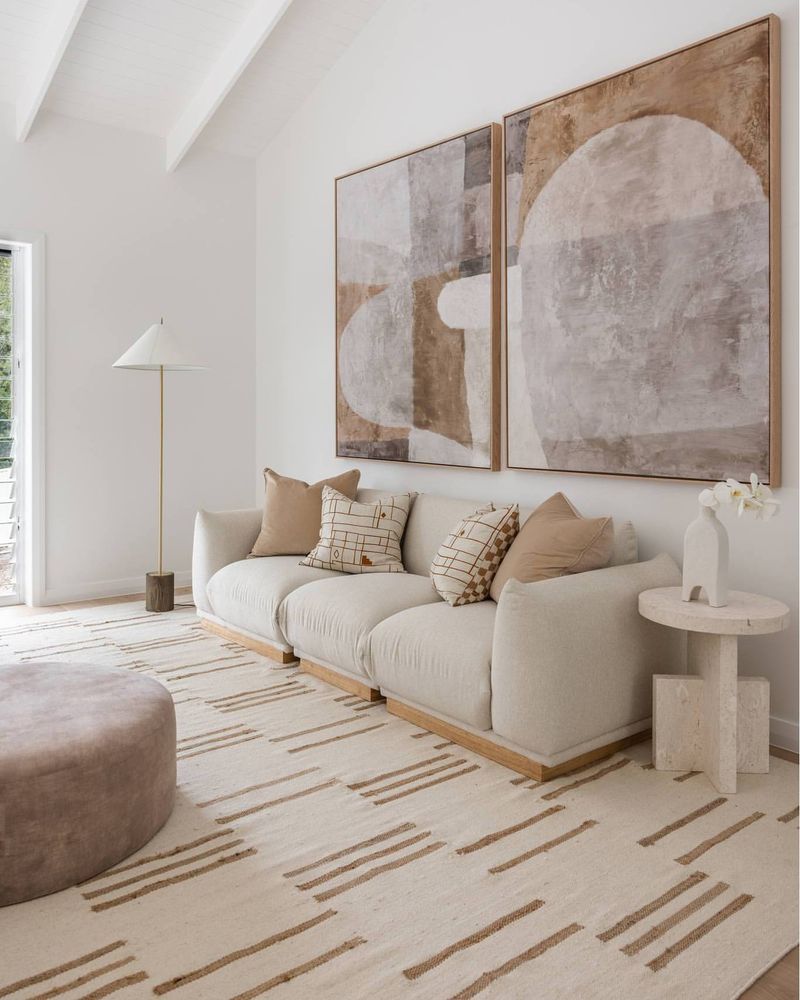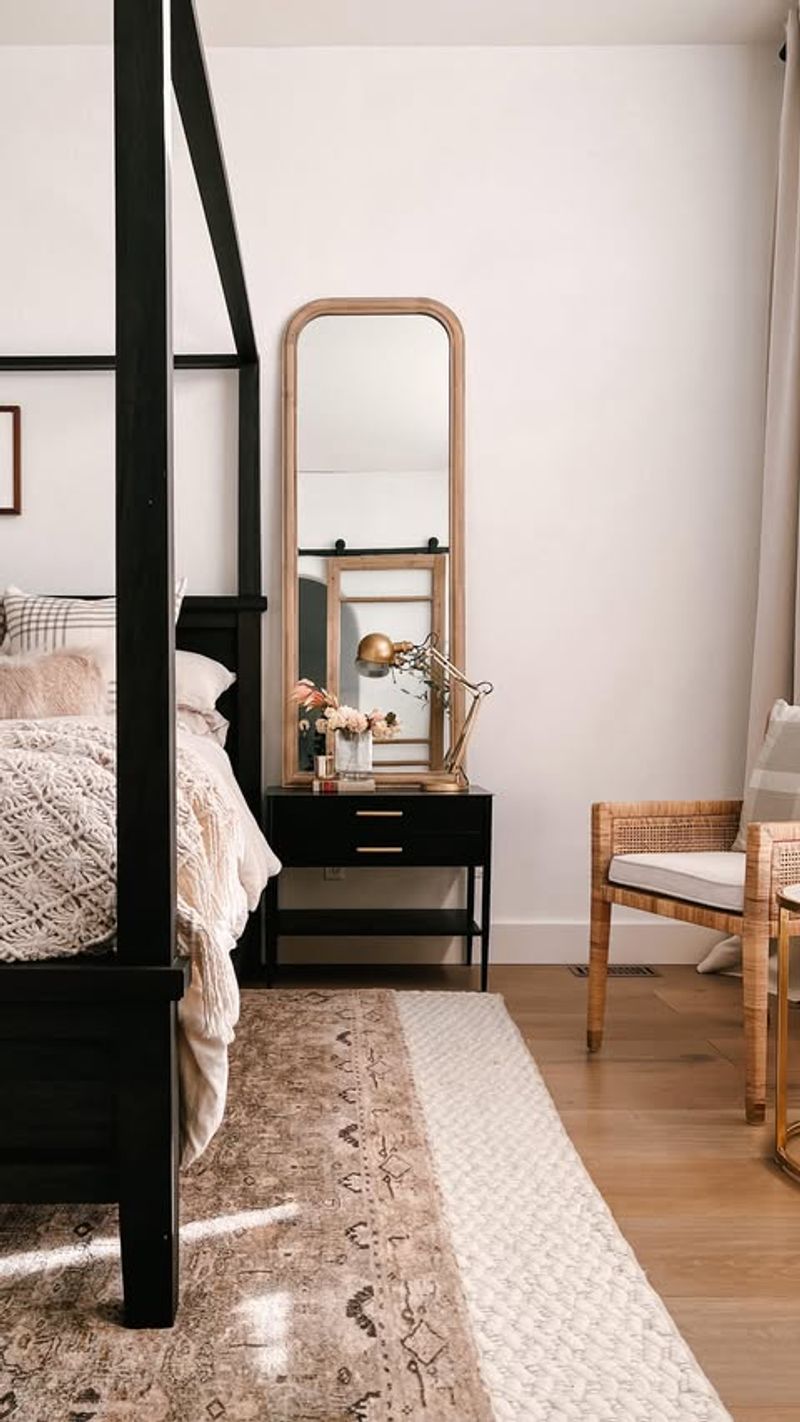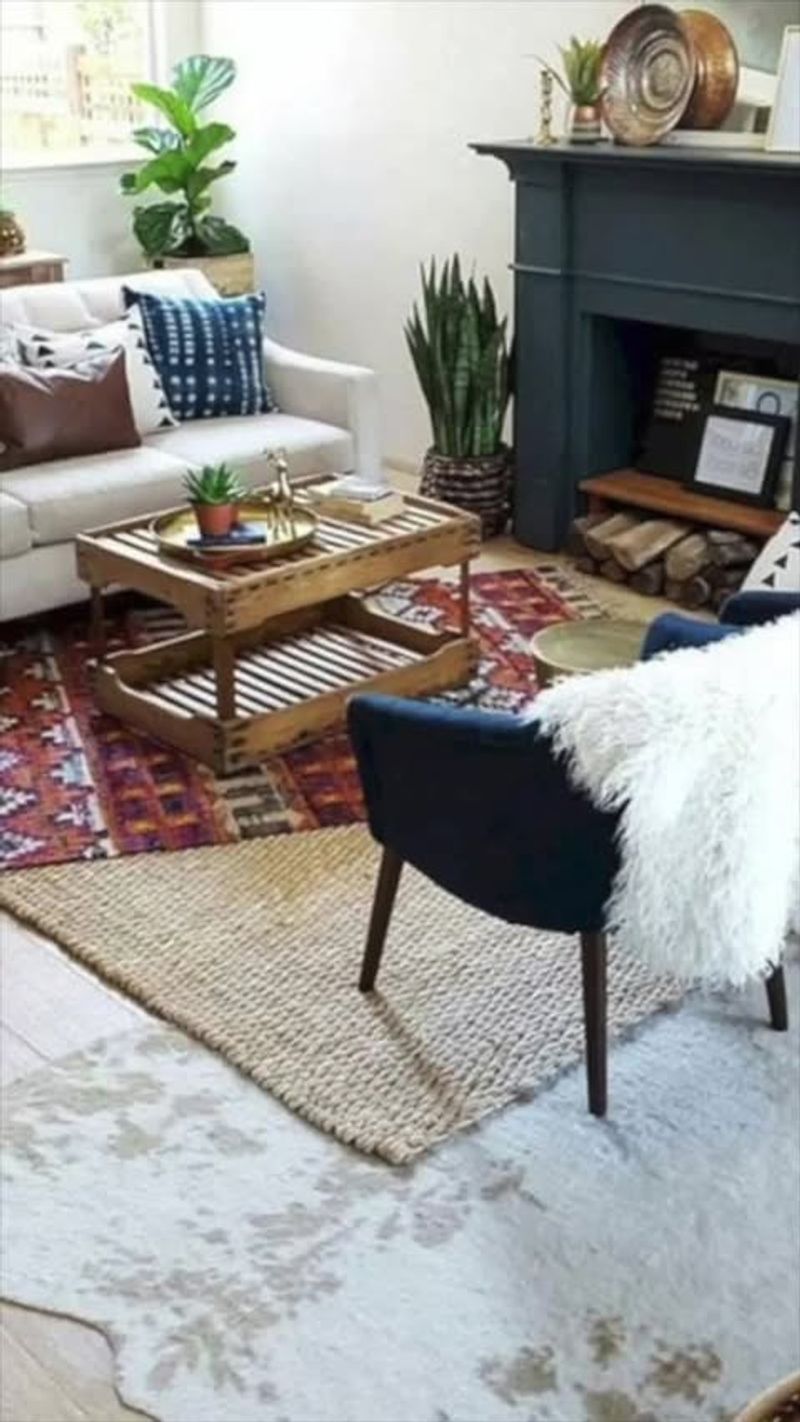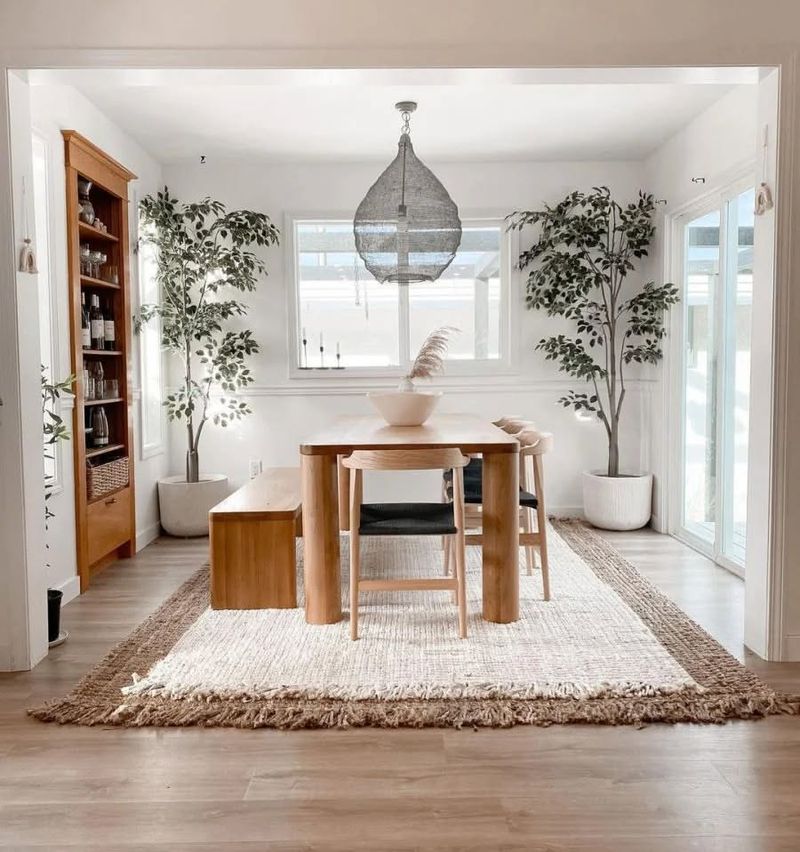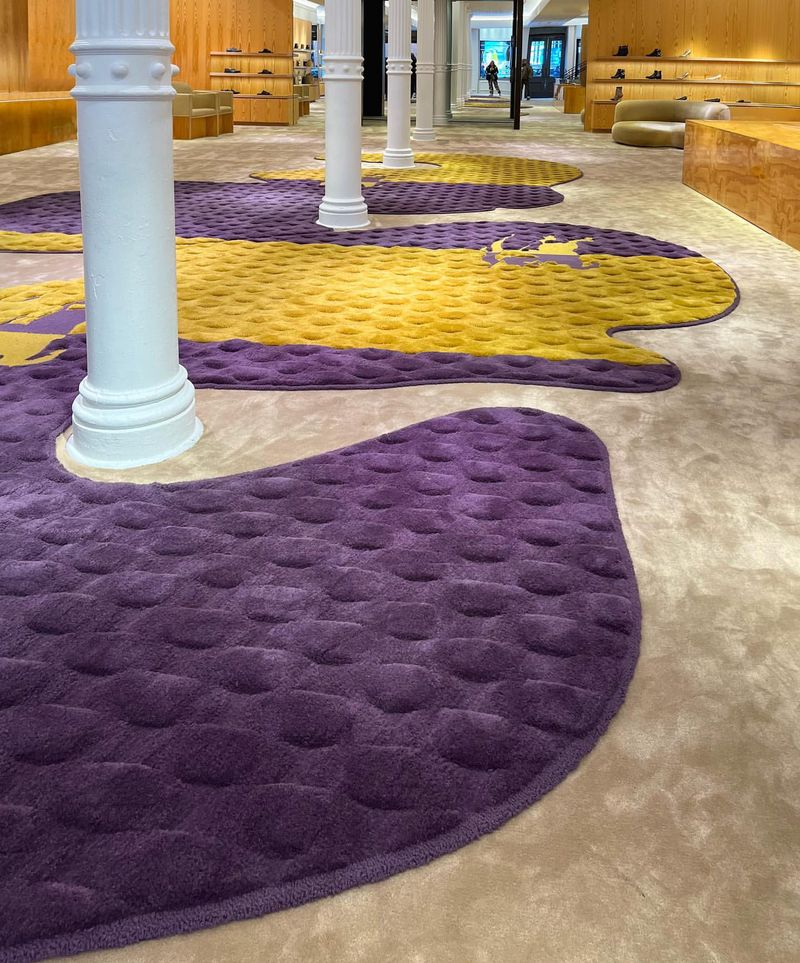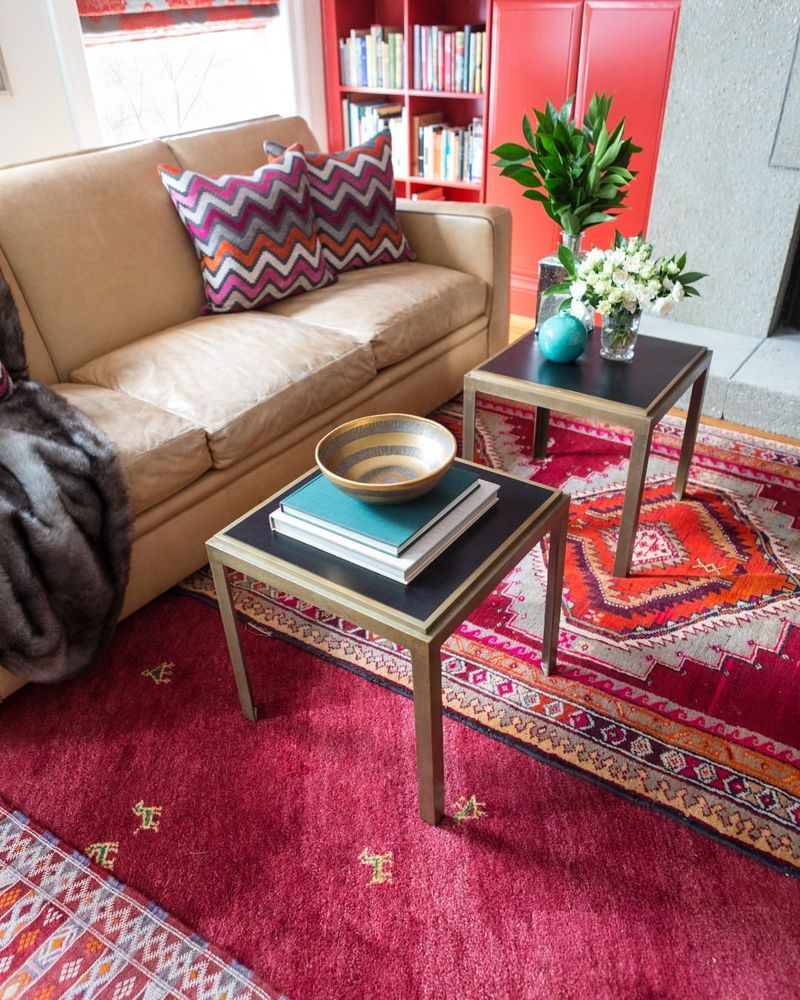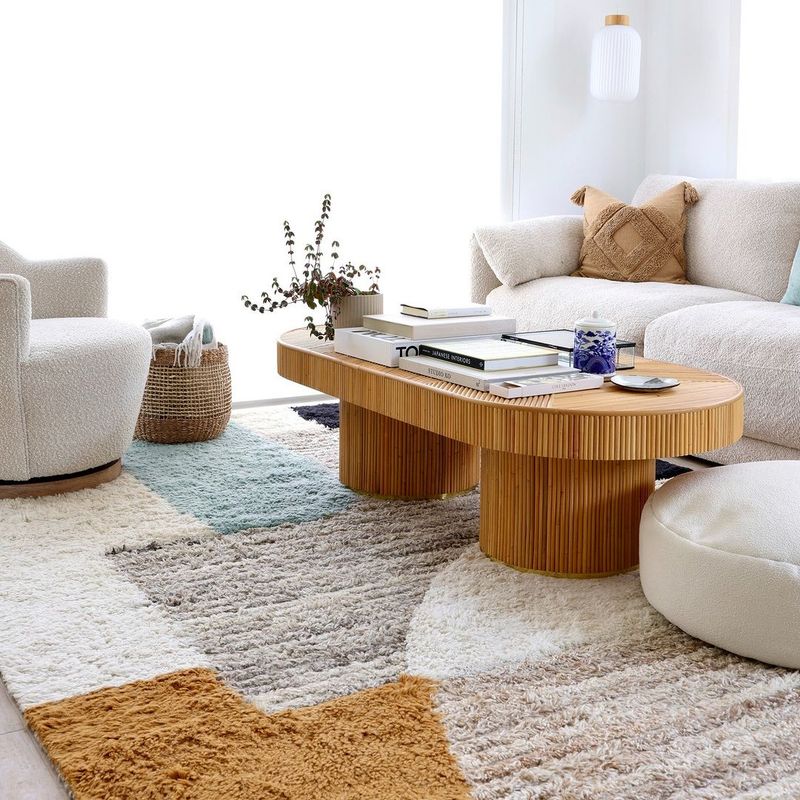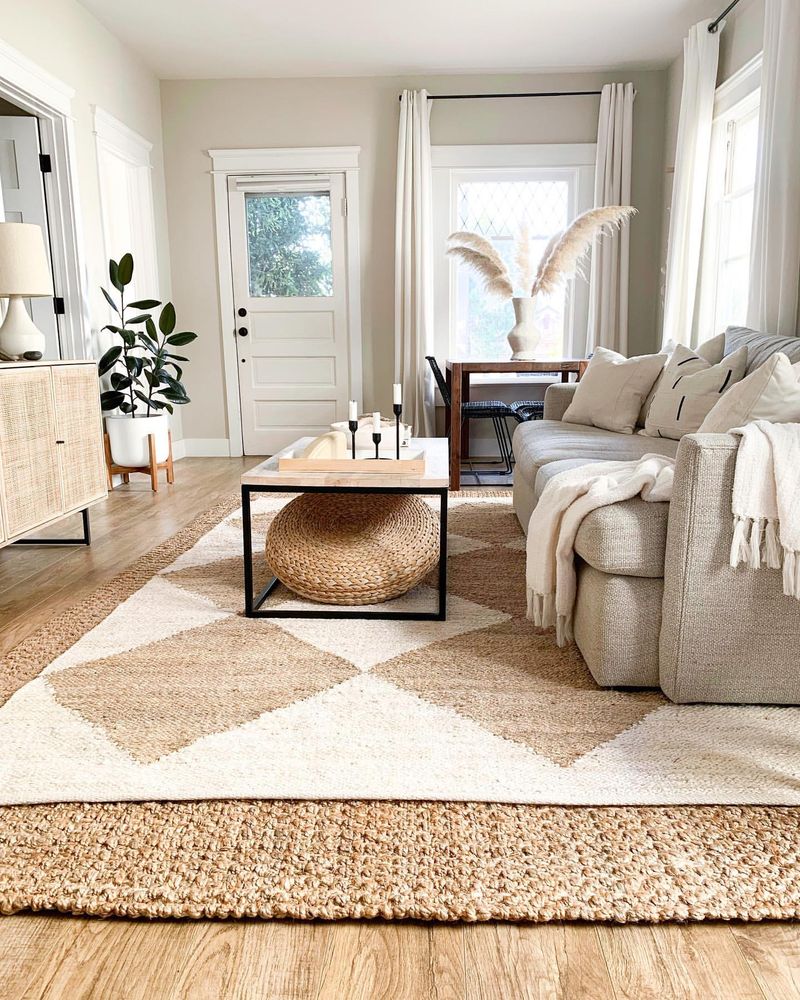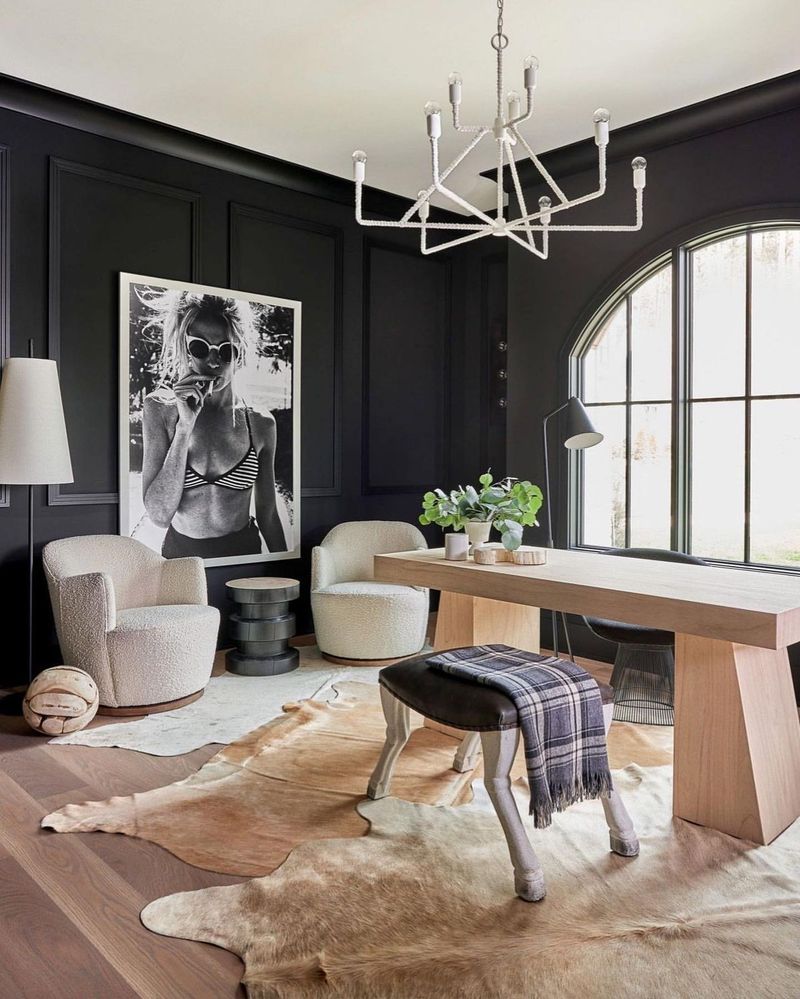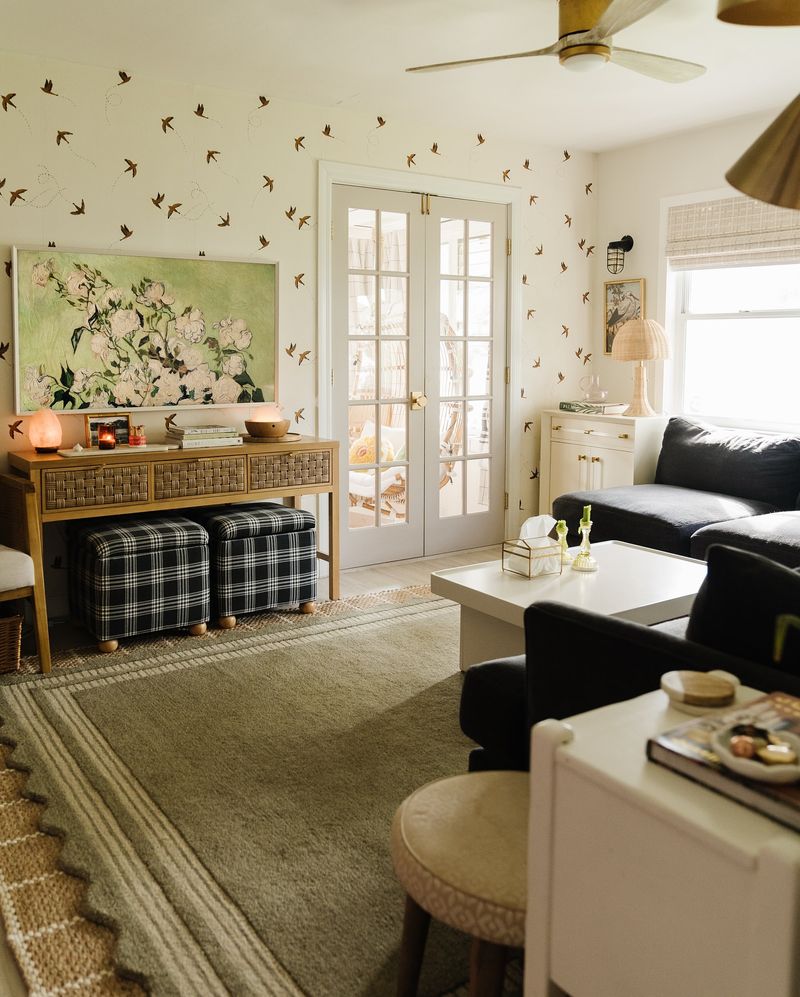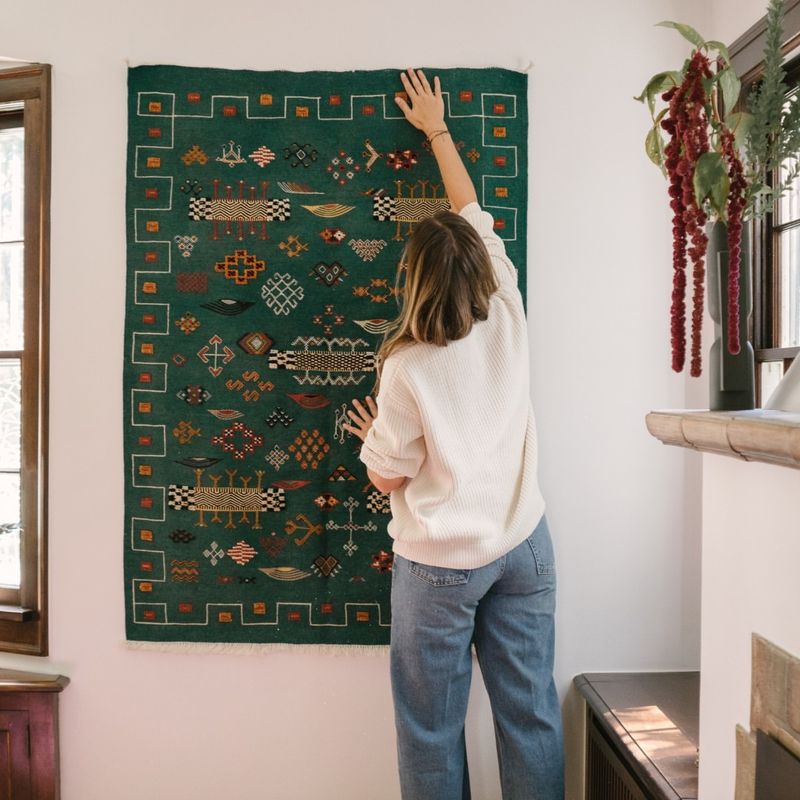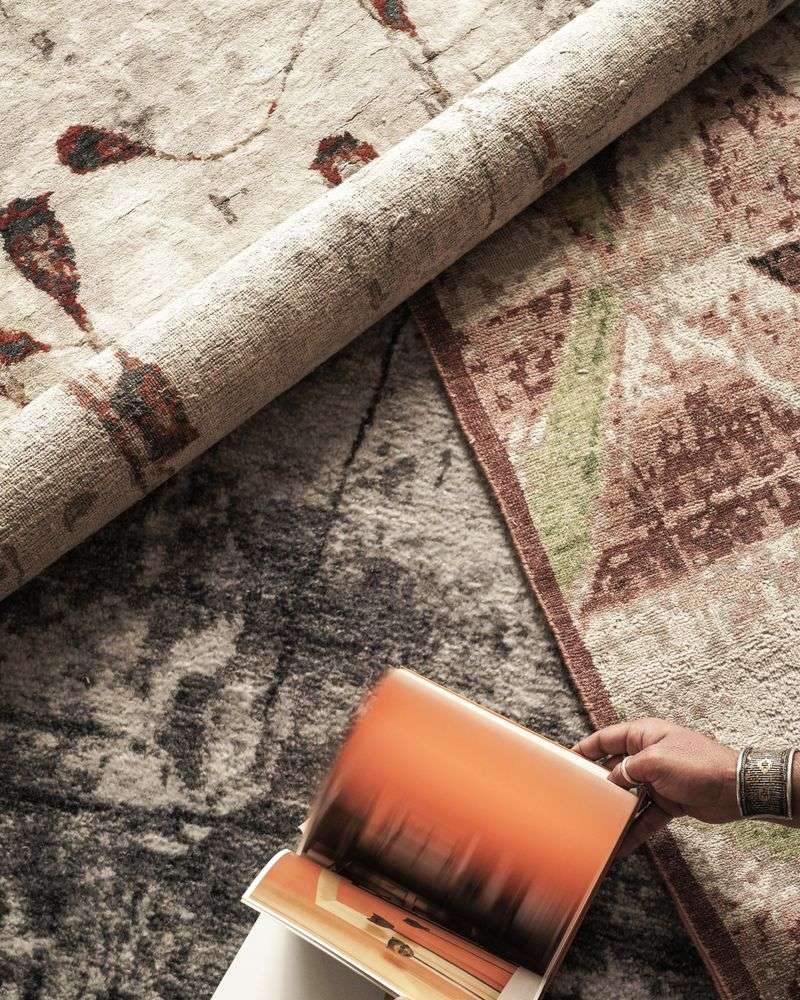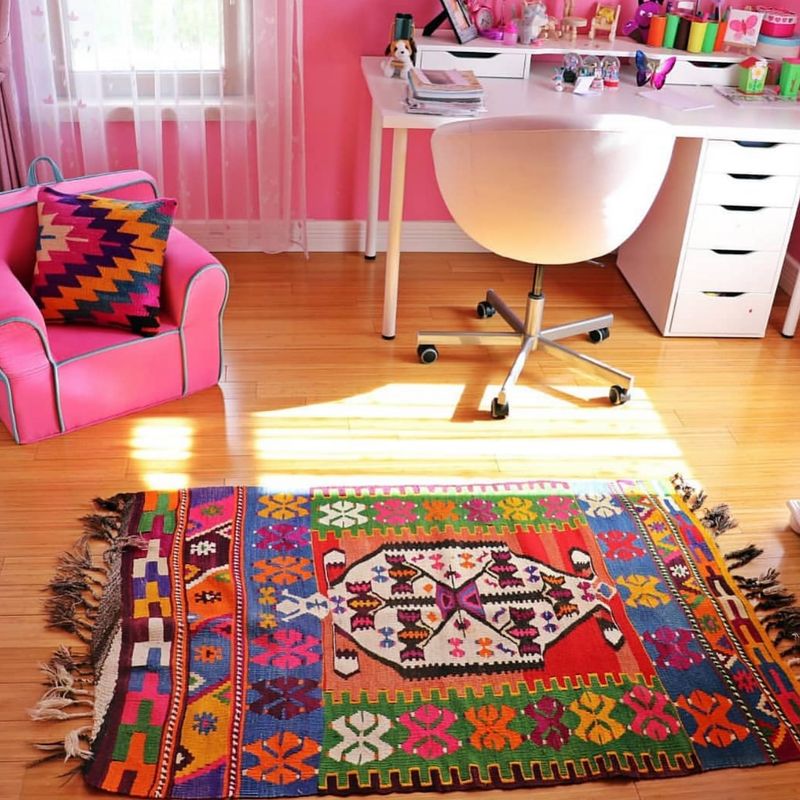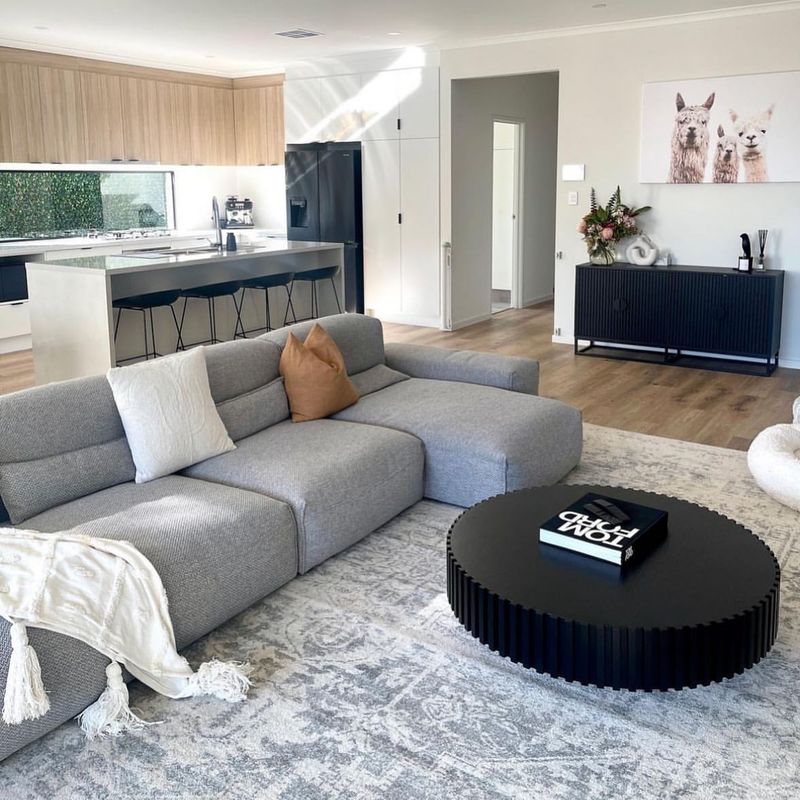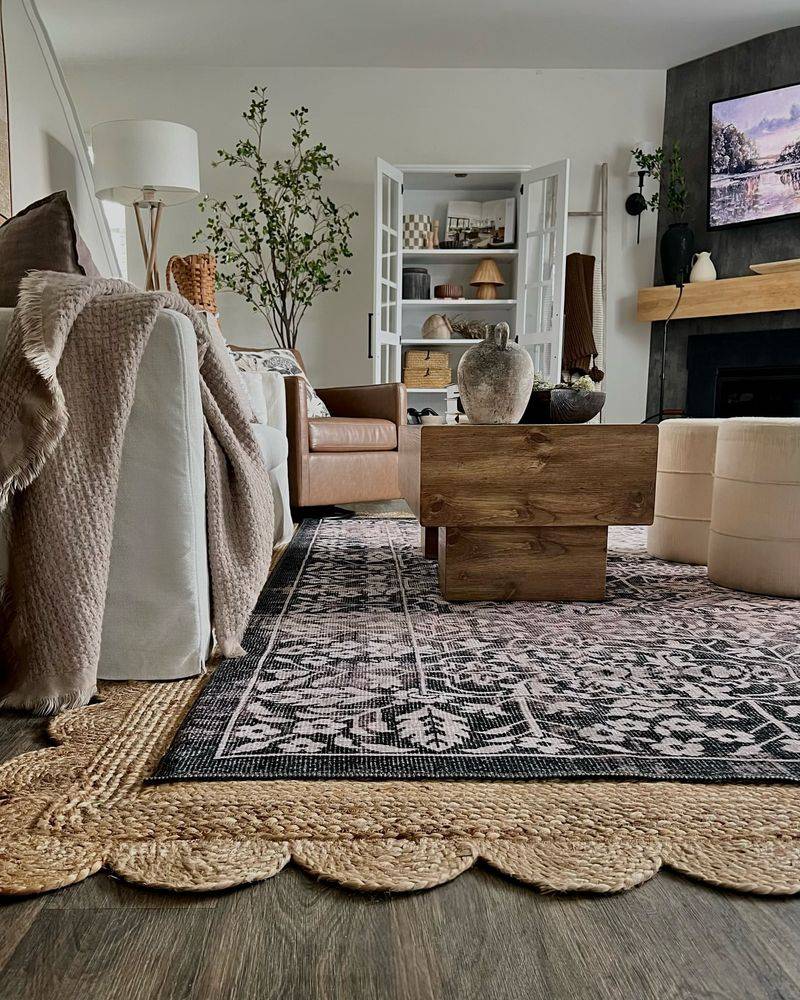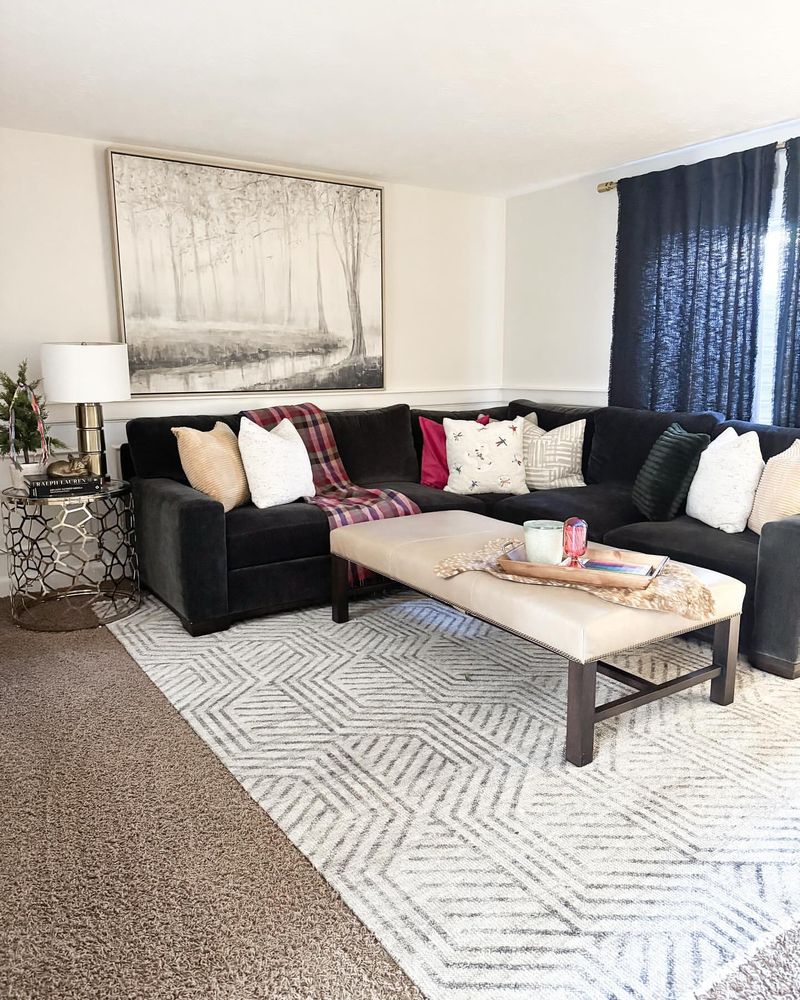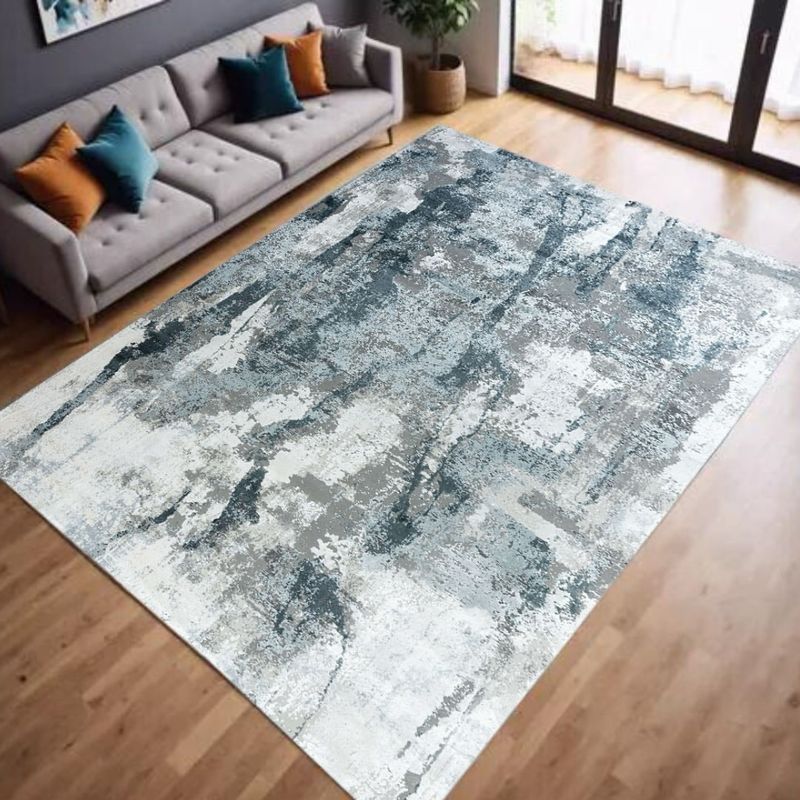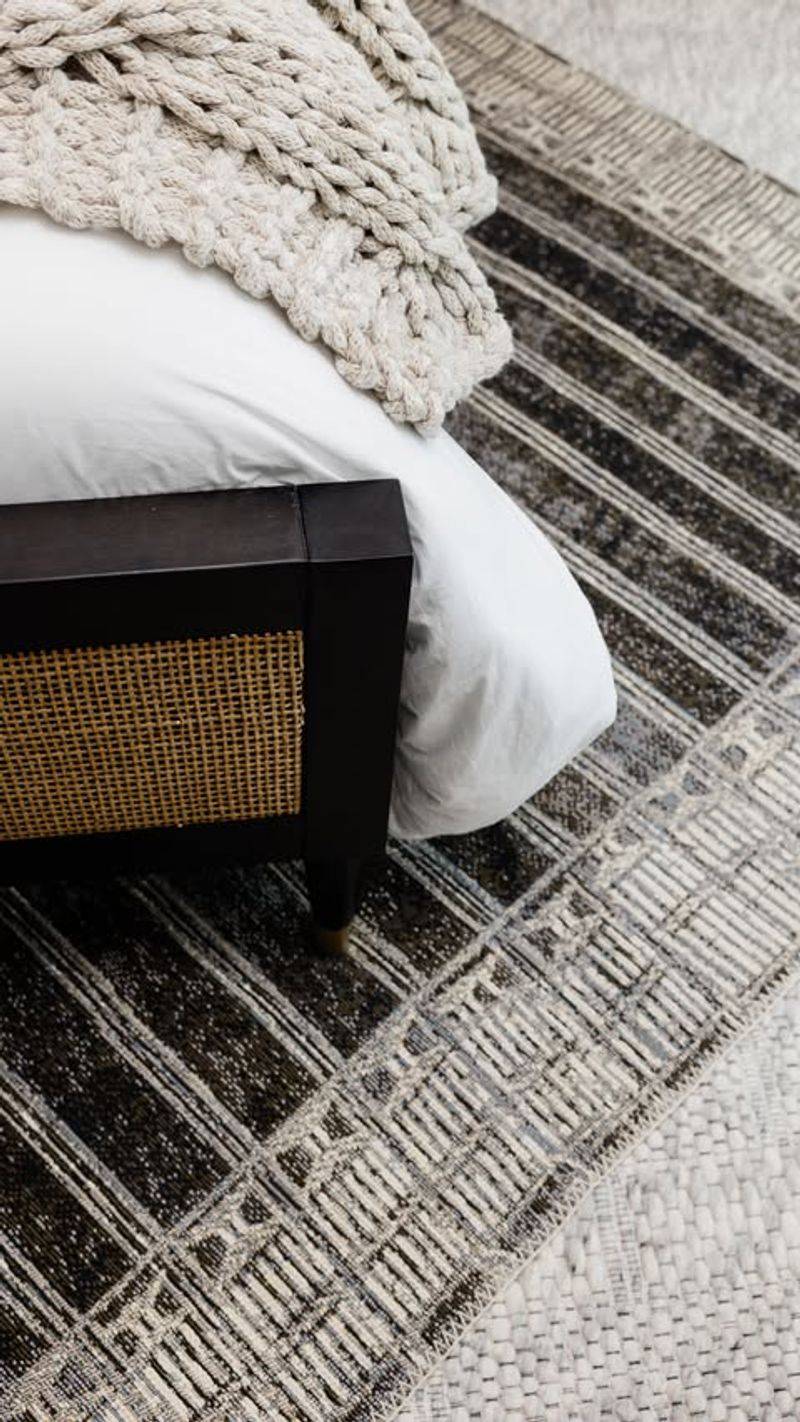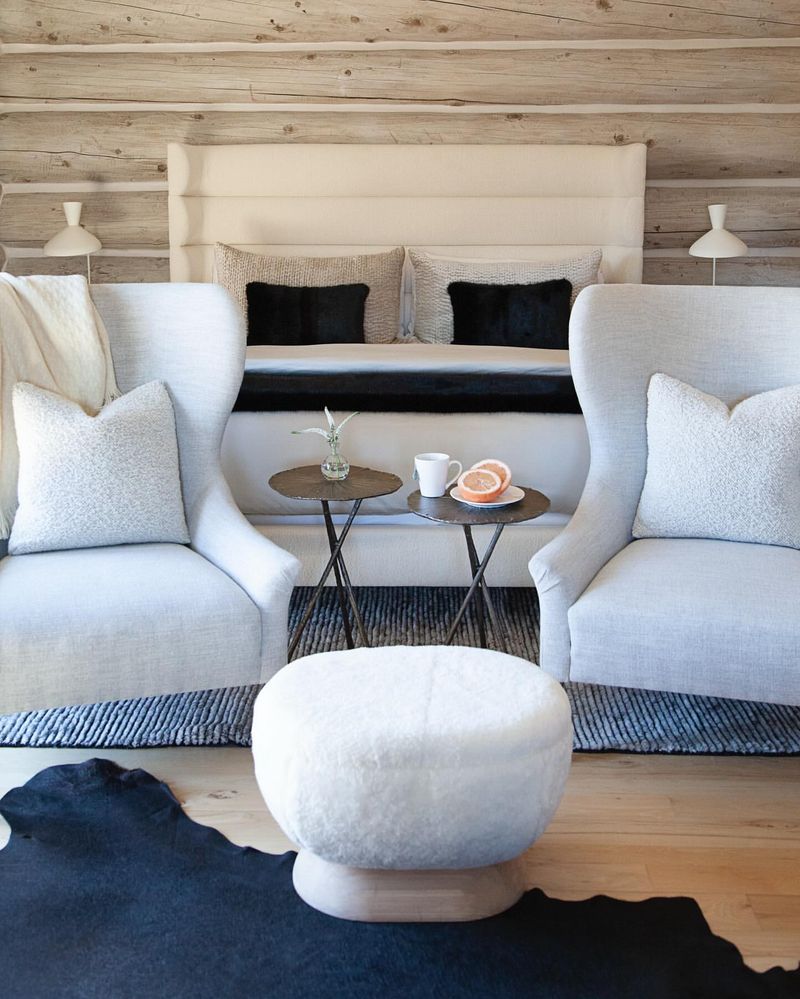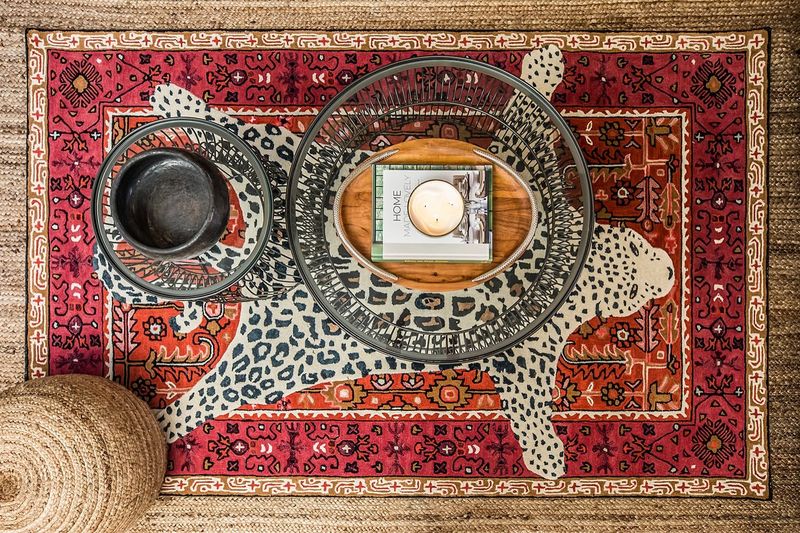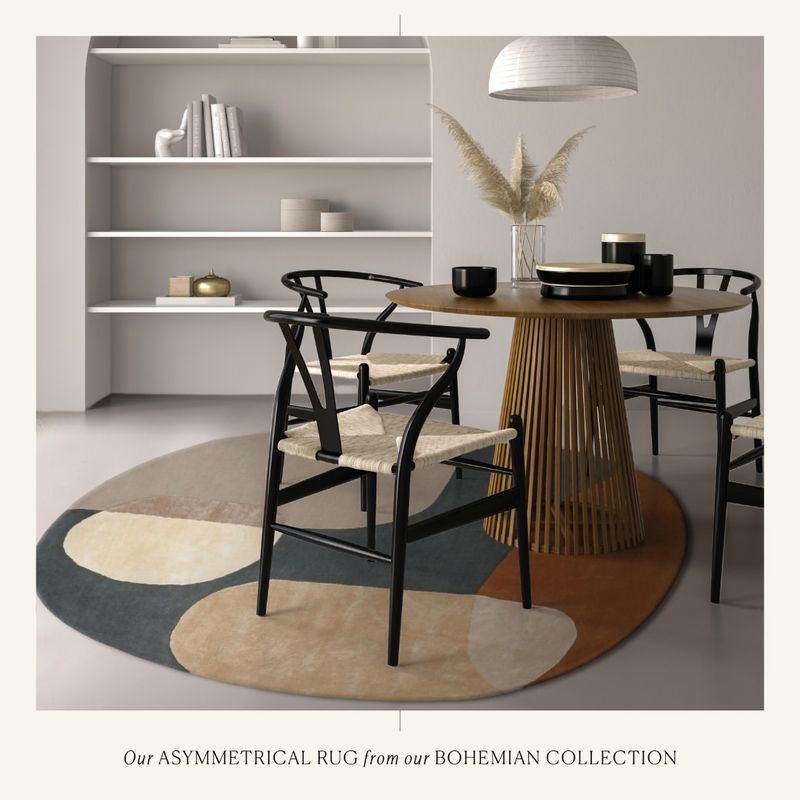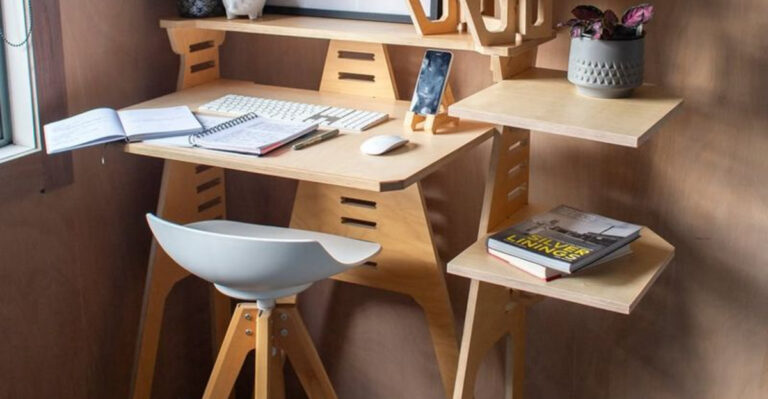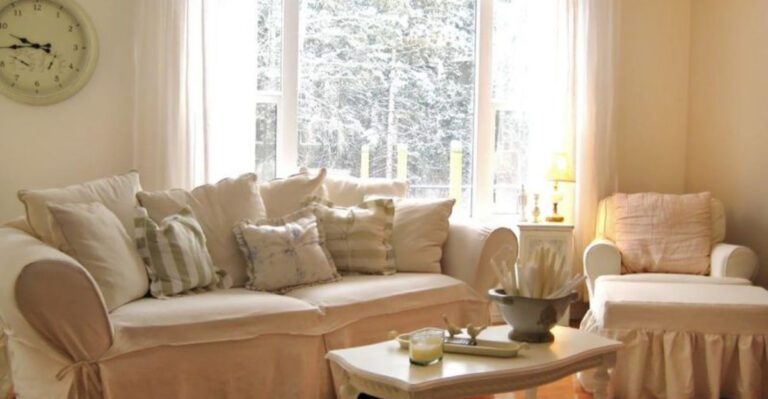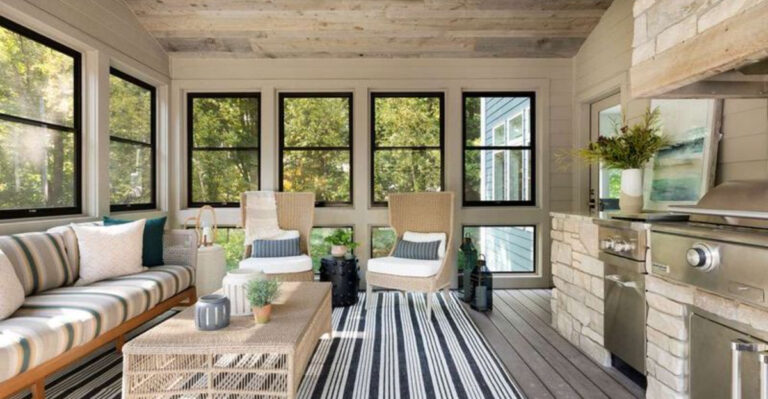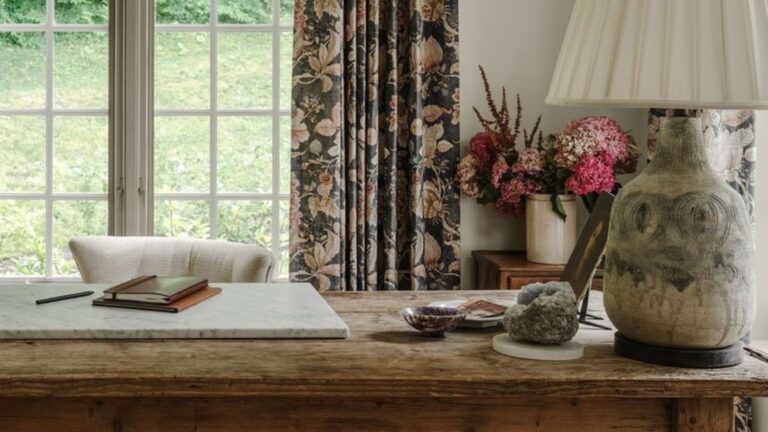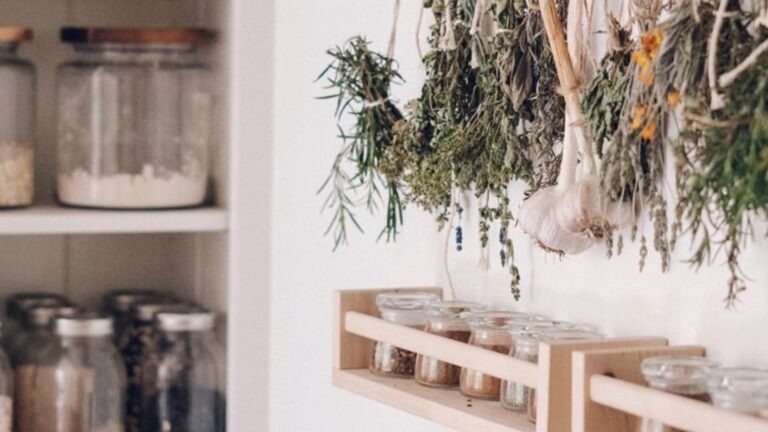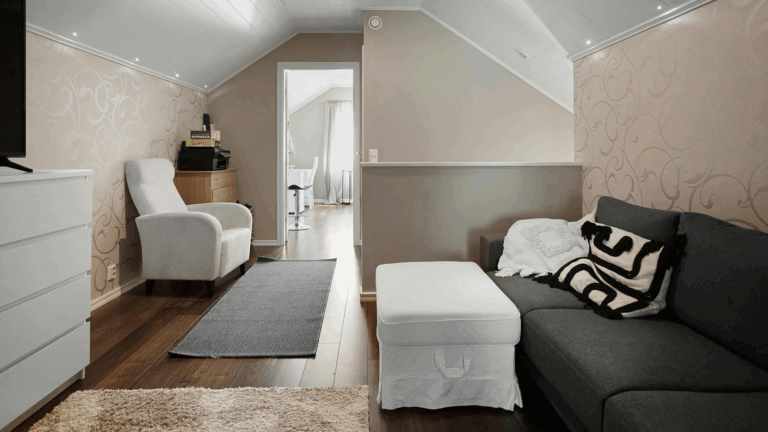25 Rules For Layering Rugs The Right Way Designers Swear By
Layering rugs is not just about stacking one atop another; it’s an art form filled with nuance and creativity. Whether it’s for adding texture, color, or simply a touch of whimsy, mastering the art of rug layering can transform any room.
By following these designer-approved rules, you can elevate your interior spaces with style and sophistication.
1. Start with a Solid Base
Begin with a neutral, solid-colored rug. This serves as a foundation, offering a canvas on which to layer. Such an approach allows for flexibility in design, acting as a backdrop that won’t compete with more intricate patterns atop it.
Choose rich textures for added depth, like a plush wool or a flat-weave cotton. Keep in mind that this base rug should be significantly larger than the others, anchoring the space effectively. It’s about setting the stage for what’s to come.
2. Mix Textures, Not Just Colors
Texture is key when layering rugs, creating tactile interest and visual appeal. Combine different materials such as a soft, shaggy rug with a smooth, flat-weave piece. This contrast will enrich the space, making it feel dynamic and layered.
Texture variation also plays with light, adding dimension to the room. Avoid using textures that clash harshly; instead, aim for a harmonious blend that feels intentional. Remember, it’s about creating depth without overwhelming the senses.
3. Play with Patterns
When it comes to patterns, the rule is to be fearless yet thoughtful. Mix geometrics with florals or stripes for a bold statement. Ensure there’s a common color thread running through the patterns to maintain cohesiveness.
This strategy allows for creativity while avoiding visual chaos. Balance is vital—let one rug’s pattern dominate while others play supporting roles. This creates a curated look that’s both intriguing and harmonious, rather than chaotic.
4. Size Matters
Consider the size of each rug in your layering scheme. Larger rugs should form the base, with smaller ones added as accents. This creates a sense of balance and proportion, preventing the room from feeling cluttered.
The smaller rugs should complement the larger ones, enhancing rather than detracting from the overall design. Pay attention to room dimensions and furniture placement to ensure each rug fits comfortably, enhancing the space rather than overwhelming it.
5. Color Coordination is Key
Color harmony is essential in rug layering. Choose hues that complement each other, drawing from the room’s existing palette. This technique ties the space together aesthetically, creating a unified look.
Experiment with shades, ensuring there’s a pleasing flow between the colors. If one rug features bold colors, balance it with more muted tones elsewhere. This way, the rugs enhance rather than overpower, contributing to a cohesive and attractive environment.
6. Mind the Layer Overlap
The way you overlap rugs can drastically alter the room’s dynamics. Be deliberate with placements, ensuring that overlaps highlight each rug’s best features. Too much overlap can result in a chaotic appearance, while too little might feel disconnected.
Aim for a balance where each rug’s unique qualities are showcased, contributing to the room’s overall ambiance. This technique not only adds visual interest but also guides the eye across the space, creating a cohesive design narrative.
7. Define Spaces with Rugs
Use rugs to define areas within a room, especially in open-concept layouts. Layering different rugs can help delineate between, say, a sitting area and a dining space. This not only adds structure but also enhances functionality, making each zone feel distinct yet connected.
Choose rugs that reflect the purpose of each area through texture and design. This method of zoning transforms a vast space into a more intimate, organized environment, offering both style and practicality.
8. Think Seasonally
Adjust your rug layering strategy with the seasons to keep your decor fresh and relevant. Opt for heavier, warmer textures during winter months, while lighter, breezier options suit summer. This approach not only revitalizes the space but also creates a comforting, seasonal atmosphere.
By swapping out just a few rugs, you can transform the room’s mood, making it feel cozy in winter and refreshing in summer. It’s a simple yet effective way to keep your interior lively.
9. Experiment with Shapes
Break the monotony by incorporating rugs of various shapes into your layering design. Use a round rug to soften sharp angles, or an irregular shape to add an unexpected twist. This adds visual intrigue and can make the room feel more dynamic and playful.
When mixing shapes, ensure there’s a connecting element like a shared color or pattern theme. By doing so, the rugs will complement rather than clash, creating a harmonious, well-orchestrated design.
10. Utilize Vintage Finds
Incorporate vintage rugs to add character and history to your space. These pieces often feature intricate patterns and color schemes, providing a unique focal point. Layer them with modern rugs for a balanced look that blends old-world charm with contemporary style.
Vintage rugs tell a story, offering a conversation piece for guests. This mix not only enhances the aesthetic but also deepens the room’s narrative, allowing each layer to contribute its distinct voice.
11. Go Bold with a Statement Piece
Sometimes, a single bold rug can set the tone for the entire room. Choose a vibrant, statement piece as the top layer, allowing it to be the focal point. Subtler rugs underneath can support this by providing texture and depth without competing for attention.
This strategy is about making a strong impact while maintaining balance. The key is to ensure that the statement rug doesn’t overwhelm but rather enhances the room’s overall character and charm.
12. Work with Neutrals
Neutrals don’t have to be boring. Layer different shades and textures of neutral rugs to create a sophisticated, calming space. This approach lends itself to versatility, allowing you to introduce bolder elements elsewhere in the room without clashing.
By focusing on nuances within the same color family, you achieve a peaceful, cohesive environment. It’s about subtlety and the beauty found in simplicity, offering elegance and a timeless quality to your interior design.
13. Consider Rug Materials
The material of your rugs can significantly influence the room’s feel and functionality. Wool offers warmth and softness, perfect for cozy areas. Jute provides a more rustic, natural vibe, ideal for casual settings. Cotton is versatile and easy to clean, great for high-traffic areas.
When layering, consider how these materials interact. A jute base can support a wool top layer, combining durability with comfort. Understanding material properties ensures your layered rugs are both stylish and practical.
14. Layer Rugs with Furniture in Mind
When layering rugs, consider their interaction with furniture pieces. Rugs should complement rather than conflict with furniture layouts, highlighting key pieces. Position rugs to frame seating areas, creating a cohesive, inviting space.
This not only ties the room together aesthetically but also enhances functionality. Ensure that furniture legs are either all on or off the rugs to avoid awkward spacing. This thoughtful alignment transforms your interior into a harmonious, balanced environment.
15. Add Rugs to Walls
Rugs aren’t just for floors. Consider hanging a decorative rug on the wall as an art piece. This adds texture and interest to vertical spaces, creating a cohesive look if paired with a similar style on the floor.
Wall-hung rugs can also serve as soundproofing, adding functionality. Choose designs that complement the room’s palette. This unexpected use of rugs can dramatically enhance the space, offering a unique artistic dimension beyond traditional artworks.
16. Create a Rug Mosaic
Instead of one or two large rugs, use multiple small ones to create a mosaic effect. This approach allows for greater creativity and personalization, as you mix and match colors, textures, and patterns. It’s perfect for eclectic spaces, offering a playful yet sophisticated vibe.
Arrange them thoughtfully to ensure flow and continuity. This method challenges traditional rug placement, transforming your floor into an artful canvas that reflects your unique style and taste.
17. Incorporate Cultural Designs
Celebrate diversity by incorporating rugs with cultural designs. These rugs often feature bold patterns and vibrant colors unique to their origins. Layer these with simpler designs for a balanced look that highlights the cultural piece without overwhelming the space.
This not only enriches the room aesthetically but also adds depth and meaning. Such layering tells a story, weaving cultural narratives into your decor, making your space not just stylish but also deeply personal.
18. Transition Room Styles Seamlessly
Use rugs to bridge different styles within a home, especially in open-concept areas. Layering can help transition from, say, a modern kitchen to a rustic living room. Choose rugs that feature elements of both styles, creating a cohesive flow between spaces.
This technique ensures that each area maintains its identity while contributing to an overall harmonious atmosphere. It’s about blending rather than clashing, ensuring your home feels unified yet diverse in its design narrative.
19. Play with Rug Heights
Experiment with the height of rug piles to add dimension to your layering. Mix high-pile with low-pile rugs to create a sense of depth and texture. This variation not only enhances the tactile experience but also adds visual interest.
Be mindful of placement, ensuring that high-pile rugs don’t obstruct doorways or create tripping hazards. This thoughtful approach to layering transforms a flat surface into a dynamic landscape, offering a rich sensory experience.
20. Choose Complementary Themes
When layering rugs, consider a thematic approach. Choose rugs that share a common theme, whether it’s colors like coastal blues or patterns like bohemian motifs. This thematic consistency ties the room together, providing a unified backdrop for other design elements.
The key is subtlety; the theme should enhance rather than overpower. This strategy ensures that your layered rugs contribute to a cohesive, intentional aesthetic, making your space feel curated and thoughtfully designed.
21. Use Rugs to Highlight Focal Points
Strategically place rugs to highlight the room’s focal points, such as a fireplace or an elegant coffee table. Layering rugs around these areas draws attention and creates a sense of warmth and intimacy. Choose designs that complement the focal feature, ensuring they enhance rather than distract.
This technique not only defines the space visually but also adds a layer of sophistication and purpose, making the focal point stand out as the heart of your room.
22. Create Contrasting Layers
Contrast can be captivating. Layer dark rugs with lighter ones to create a striking visual statement. This approach plays with light and shadow, adding drama to the space. Choose complementary colors to maintain harmony while achieving contrast.
This duality can make the room feel more dynamic and engaging. It’s about balance; the contrast should intrigue and invite without unsettling the overall decor. Use this method to bring a bold, artistic flair to your interior.
23. Prioritize Comfort
Comfort is key, especially in areas where you’ll spend a lot of time. Layer plush, soft rugs in living areas or bedrooms to create a luxurious feel. This not only enhances comfort but also adds a layer of warmth and coziness.
Consider underfoot needs when selecting rug materials and pile heights. The goal is to create an inviting, comfortable environment that encourages relaxation and leisure, making your home feel like a personal sanctuary of comfort and style.
24. Use Rugs as Art
Think of rugs as art pieces. Choose a beautifully patterned rug as a focal layer, allowing its design to shine as a form of floor art. Layer simpler, monochromatic rugs underneath to support this artistic statement.
This method transforms your floor into a gallery, showcasing the rug’s intricate patterns and vibrant colors. It’s a creative approach that elevates rug layering to an art form, making your space not only stylish but also uniquely expressive, like an artist’s canvas.
25. Embrace Asymmetry
Perfection is overrated—embrace asymmetry for a more dynamic and interesting layout. Layer rugs in unexpected arrangements, letting edges peek out at irregular angles. This asymmetry creates movement and adds a playful, creative element to the room.
Ensure balance by keeping color and pattern harmony in mind. Asymmetry in rug layering offers a refreshing departure from conventional layouts, infusing your space with personality and artistic flair, making it uniquely yours.

